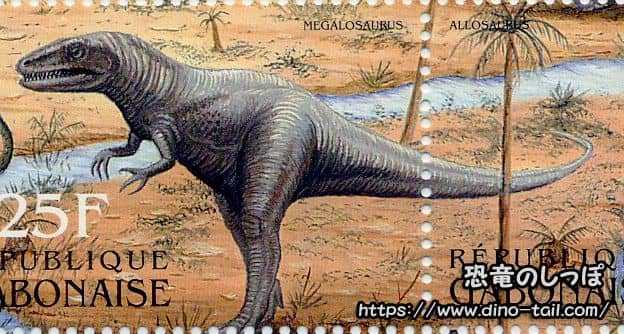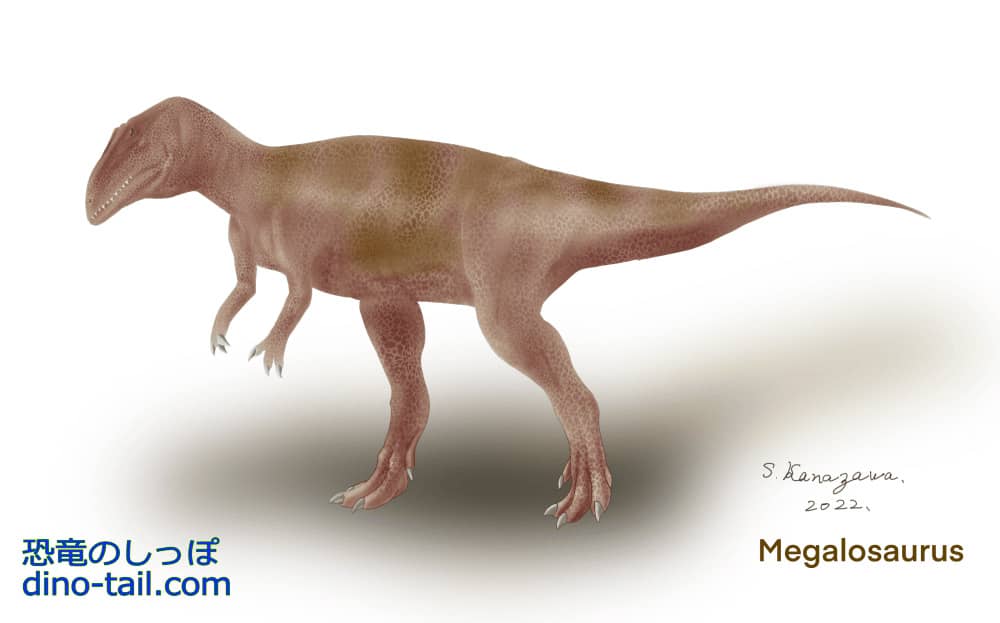About Megalosaurus
| Scientific Name (Genus) | Megalosaurus |
| Meaning of Name |
Great lizard
megalos (great) [Greek] - sauros (lizard) [Greek] |
| Classification | Saurischia, Theropoda ( Megalosauridae ) |
| Total Length | Approx. 9m |
| Diet | Carnivorous |
| Period | Middle Jurassic |
| Species | Megalosaurus bucklandii (type species) |
| Year of Paper Publication | 1824 |
| Genus Name Publication |
Notice on the Megalosaurus or great Fossil Lizard of Stonesfield.
Transactions of the Geological Society of London. 2. 1. by William Buckland. 1824. |
Features: The Apex Predator of the Middle Jurassic
Recent re-examination has revealed a more specific picture of Megalosaurus. It is thought to have reached a length of about 9 meters and weighed over 1.5 tons, making it the apex predator of Middle Jurassic Europe.
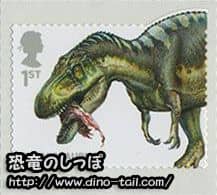
Megalosaurus was not a nimble hunter like Allosaurus, but rather had a very stocky, muscular build . Its lower jaw was particularly robust, and it is presumed to have inflicted fatal wounds on its prey with its powerful bite.
Also, unlike Tyrannosaurus, its forelimbs were not vestigial but were relatively long and powerful with three fingers, and are thought to have played an important role in capturing prey. Megalosaurus was truly an animal worthy of its name, the 'great lizard,' in the ecosystem of its time.
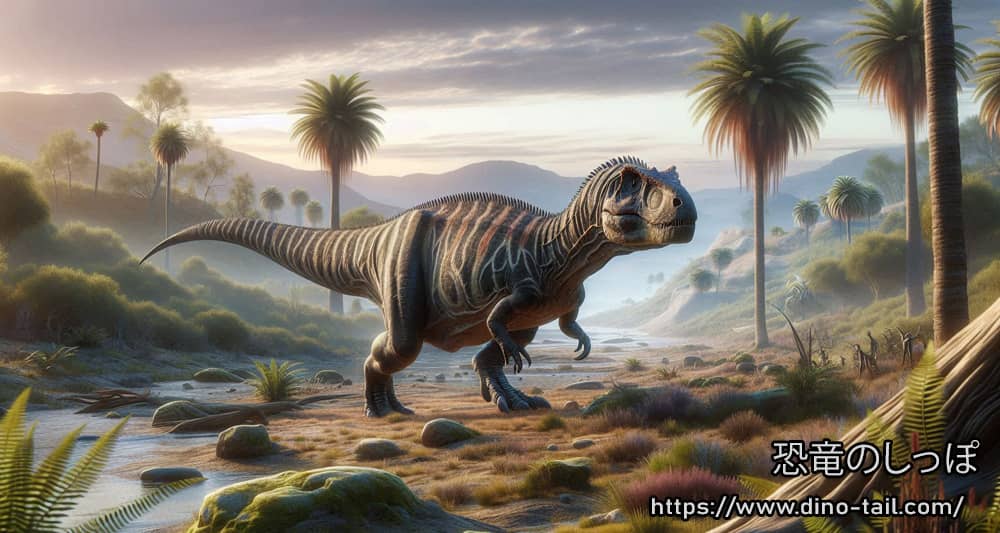
Powered by DALL-E3, 2024.
The First Dinosaur Ever Named
The first dinosaur fossil to be recorded in scientific literature was excavated in 1676 from the Taynton Limestone Formation in the Stonesfield limestone quarry in Oxfordshire, England. In the same year, Robert Plot, a professor of chemistry at Oxford University, published an illustration of this fossil. Although Robert Plot himself thought it was an elephant's femur, it is now believed to be part of a Megalosaurus femur.
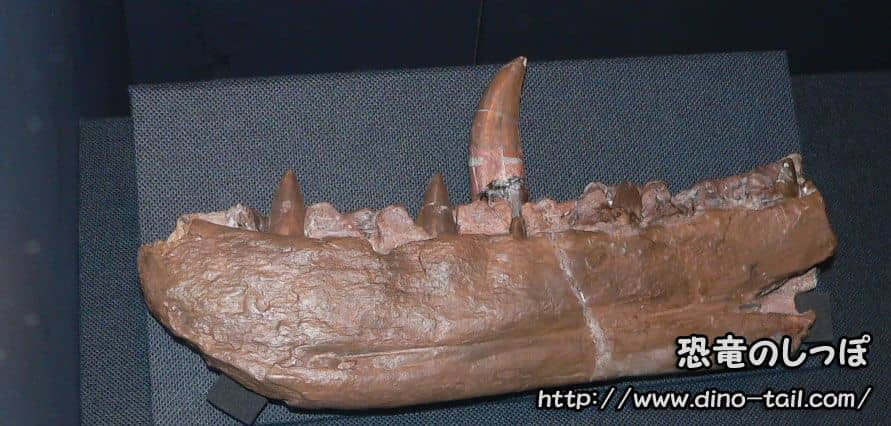
In 1797, the physician Sir Christopher Pegge discovered a carnivorous lower jaw fossil in the same Stonesfield limestone quarry. After passing through the collection of the Christ Church Anatomy School, the fossil was acquired by William Buckland, a professor of geology at Oxford University and dean of Christ Church.
At first, Buckland was unsure what kind of animal it belonged to, but in 1818, the French comparative anatomist Georges Cuvier visited him and suggested it was 'something like a giant lizard.' At a meeting of the Geological Society of London in February 1824, Buckland formally named and announced it as 'Megalosaurus.' It became the first dinosaur ever named.
(Although not described in a paper, it is said that the physician James Parkinson, famous for his discovery of Parkinson's disease, used the word 'Megalosaurus' in 1822, before Buckland's description.)
In the 1850s, a reconstruction model was created under the supervision of the British Museum of Natural History. At that time, Megalosaurus was reconstructed as a four-legged lizard. In these early reconstructions, it was thought to be a larger animal than is currently estimated. Megalosaurus began to be reconstructed as a bipedal animal in the 1870s, when bipedal theropods (carnivorous dinosaurs) began to be discovered in North America.
For a long time, Megalosaurus was classified in the Allosauroidea, but there has been a recent move to reclassify it, and the Megalosauridae family has been created and it has been moved there.
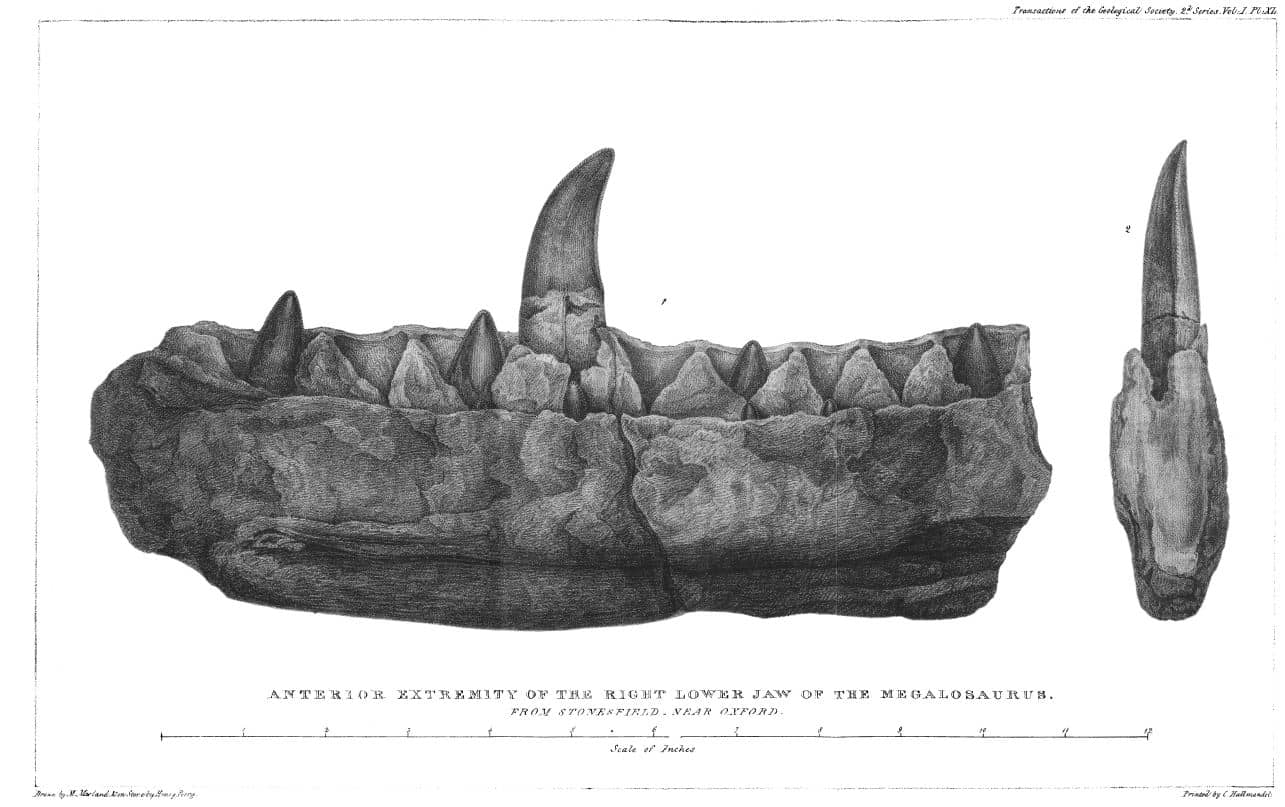
Source: Notice on the Megalosaurus or great Fossil Lizard of Stonesfield.
Transactions of the Geological Society of London. 2. 1.
by William Buckland. 1824.
Megalosaurus Stamp & Fossil Gallery
